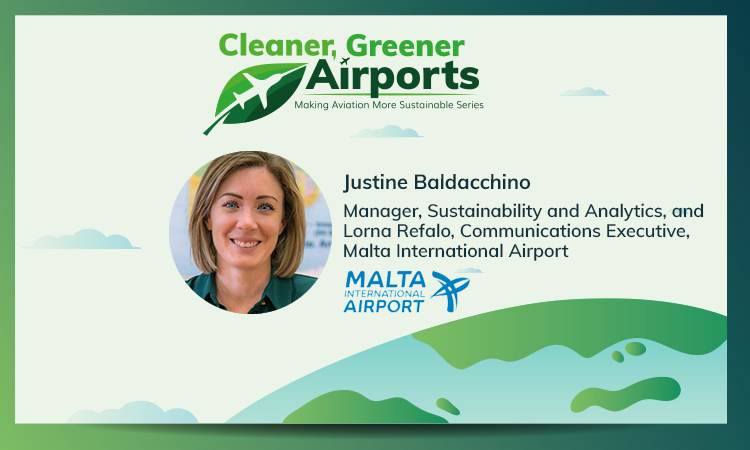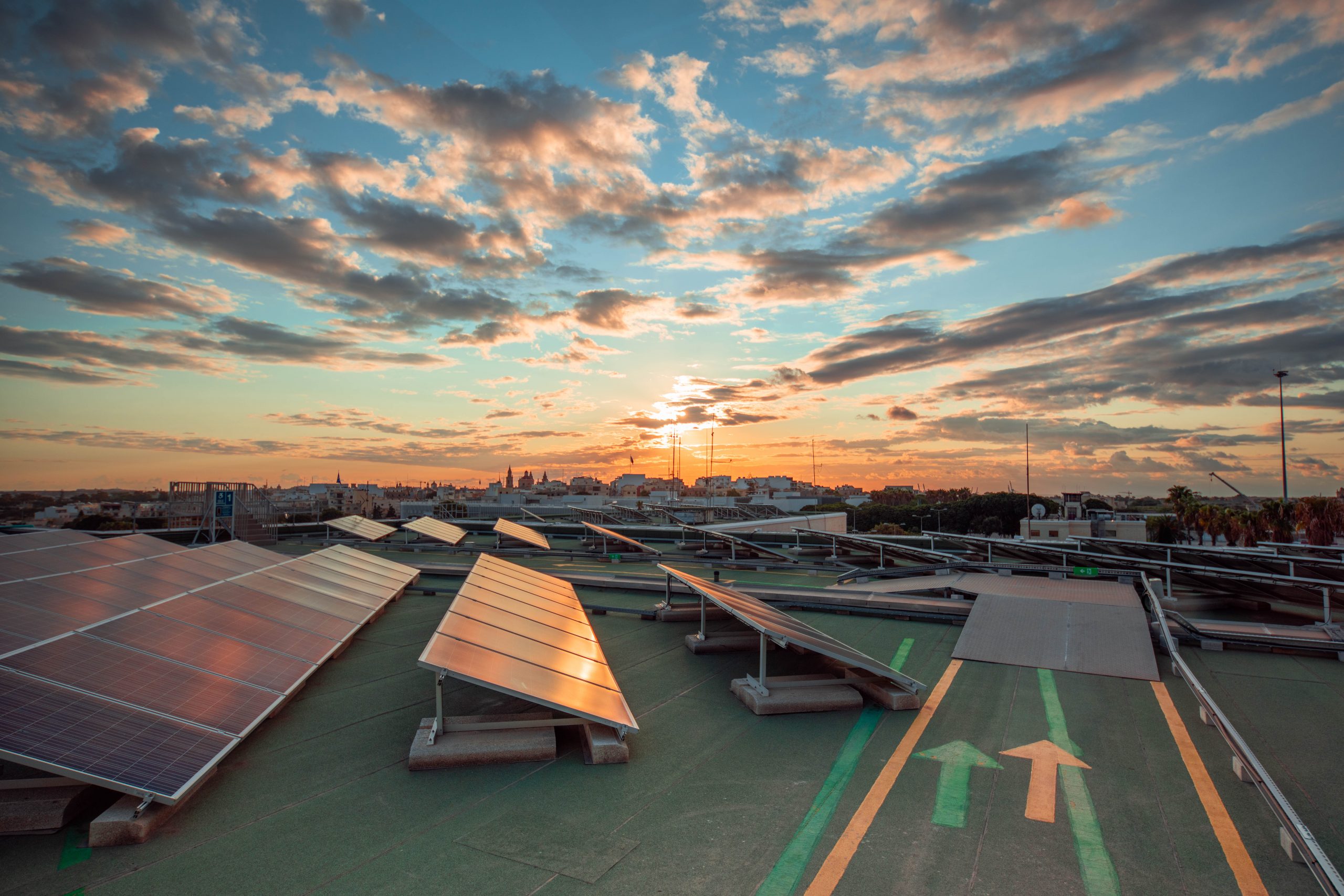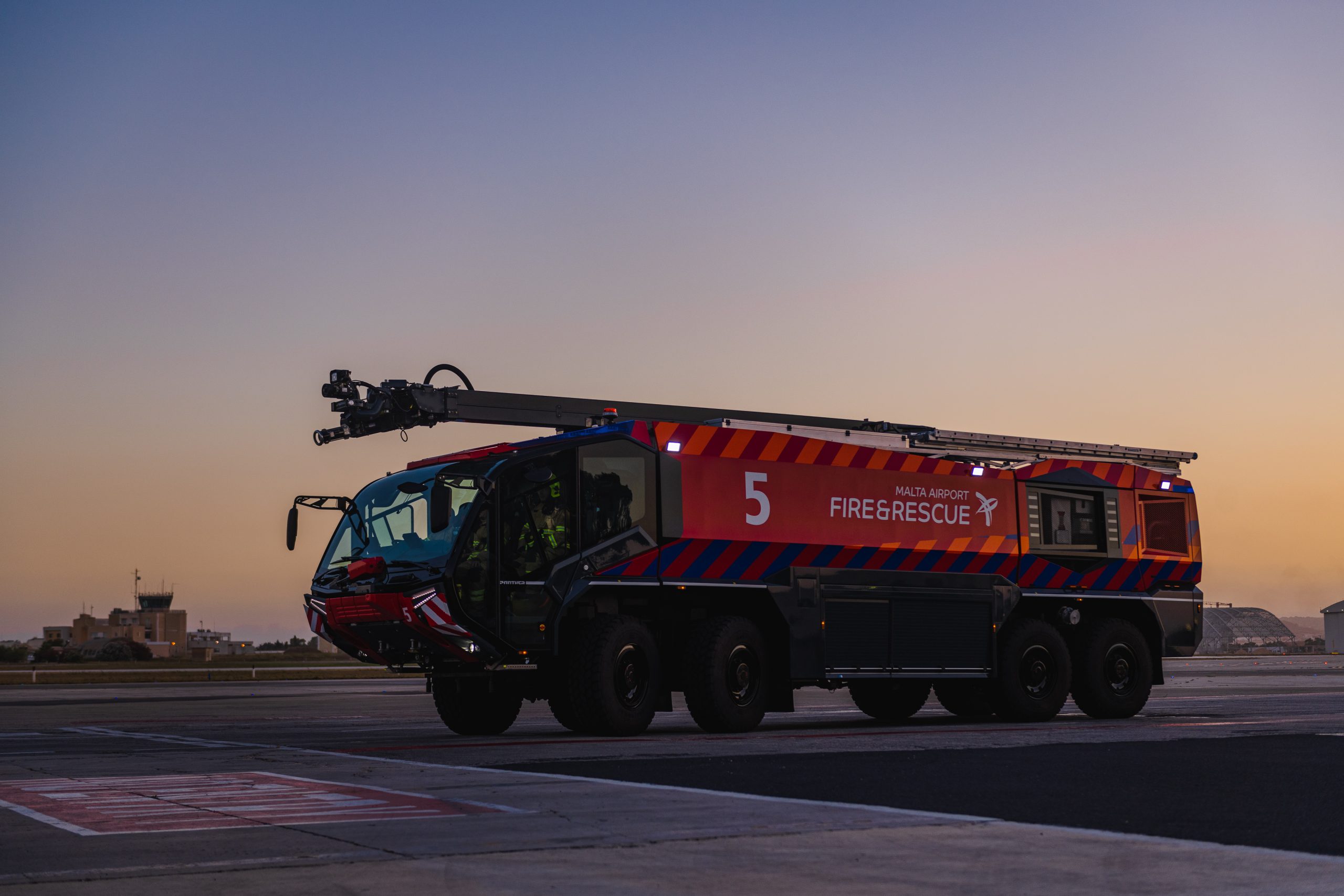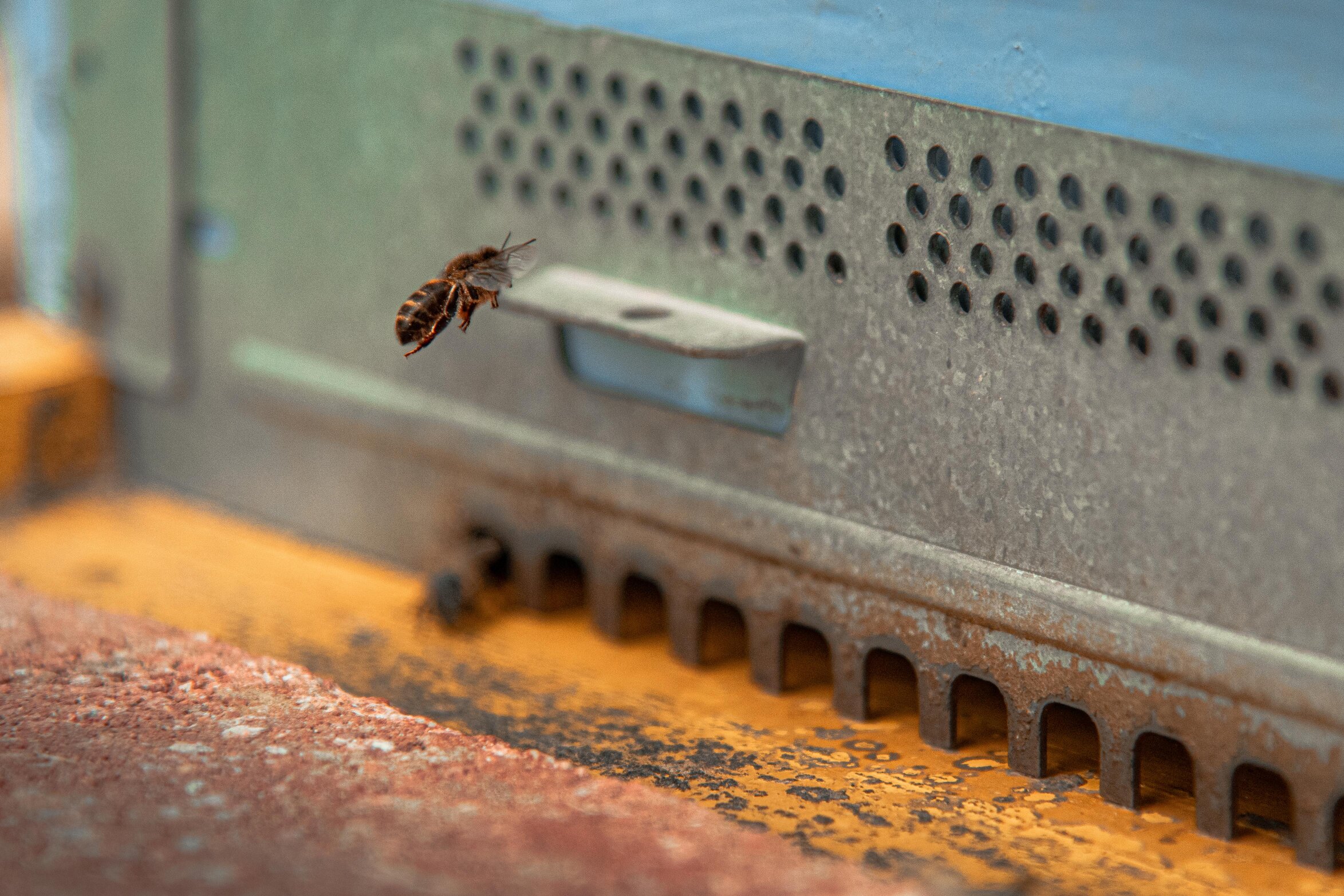Cleaner, Greener Airports: Making Aviation More Sustainable – Malta International Airport
- Like
- Digg
- Del
- Tumblr
- VKontakte
- Buffer
- Love This
- Odnoklassniki
- Meneame
- Blogger
- Amazon
- Yahoo Mail
- Gmail
- AOL
- Newsvine
- HackerNews
- Evernote
- MySpace
- Mail.ru
- Viadeo
- Line
- Comments
- Yummly
- SMS
- Viber
- Telegram
- Subscribe
- Skype
- Facebook Messenger
- Kakao
- LiveJournal
- Yammer
- Edgar
- Fintel
- Mix
- Instapaper
- Copy Link
Posted: 3 June 2022 | Justine Baldacchino, Lorna Refalo | No comments yet
In the latest instalment of International Airport Review’s sustainability series, Malta International Airport’s Justine Baldacchino, Manager, Sustainability and Analytics, and Lorna Refalo, Communications Executive, discuss the exciting initiatives in place to maintain a sustainable recovery momentum post-COVID-19 pandemic.


Being the point of entry for around 97 per cent of all passengers visiting Malta, Malta International Airport (MLA) has always embraced its unique position as an opportunity to make great first impressions on tourists, through both Mediterranean hospitality and service excellence. The airport team’s commitment to carefully crafting the best airport experience gains more weight given that tourism is one of Malta’s main economic pillars, with a contribution of around 30 per cent to the local economy prior to the outbreak of COVID-19.
As tourist numbers steadily increased between 2010 and 2019, hitting an all-time high 2.7 million before COVID-19 decimated this figure, as a company, we became increasingly committed to striking the right balance between achieving further growth and mitigating any undesirable impacts on the local community and the environment. A successful strategy in this regard, and of which MLA has worked closely with Malta’s main tourism stakeholders in recent years, is targeted towards addressing seasonality. The aim is to stimulate evenly spread tourist inflows across the year, for economic reasons, as well as to dilute the demand on the island, which measures just 316 km2, and its resources at any given time.
Utilising solar energy to reduce our carbon footprint


Credit: Malta International Airport (MLA)
In parallel with these endeavours, around a decade ago, we started putting more environmental considerations at the heart of our decisions. This led us to build one of the first BREEAM-certified buildings on the island – SkyParks Business Centre, as we started to invest in solar energy as a means by which to minimise our carbon footprint. The airport campus’s first photovoltaic panels, with a cumulative capacity of 100kWp, were installed in 2012, back when the Maltese Islands started seeing a heightened interest in this form of energy. Since then, we have invested in another three PV systems, the last of which was installed in December 2021. The full effect of this fourth photovoltaic system will be captured for the first time in the data recorded throughout 2022, and is expected to increase the amount of clean energy generated by the airport from 2.08 million kWh in 2021 to more than three million kWh at the end of 2022.
COVID-19 impact
The hurdles stemming from the COVID-19 pandemic led us to rethink some of our priorities and investments. However, our efforts to seek out more opportunities to decarbonise our operation did not abate, as we experienced first-hand the hardship and instability brought about by a global crisis and became even more adamant to help avert another one.
Adding a fifth PV system
Towards the end of 2021, the team identified a suitable location for the airport campus’s fifth PV system, which is planned to be installed later this year, allowing MLA’s airfield to run entirely on clean energy. 2021 also saw us commission a new Building Management System, which will complement our investment in clean energy and more energy-efficient lighting solutions across the airport campus, enabling us to optimise our energy usage inside the terminal through automated air quality and climate control.
Reducing fuel-induced emissions
While electricity is the main contributor to our GHG emissions, the contribution of fuel to these emissions amounts to around 10 per cent. To address fuel-induced emissions, we have been making a gradual shift towards the use of cleaner vehicles through our Vehicle Replacement Programme. Older cars used by the airport Management Team have been replaced by cleaner models and, so far, 28 per cent of the vehicles used for operational reasons have been replaced by hybrid or electric models. We have also invested around €3 million in the procurement of three low-emission Rosenbauer fire engines, which are fitted with Euro 6 exhaust technology.


One of MLA’s three new low-emission Rosenbauer fire trick. Credit: Malta International Airport (MLA)
One of the ways by which we measure the success of these initiatives is with the GHG intensity metric. Back when we started using this metric in 2016, our airport’s GHG emissions stood at 1.2kg of CO2 per passenger, and by 2019 we had succeeded in lowering our GHG intensity to 0.7kg of CO2 per passenger. Our plans for further reductions in this intensity metric were interrupted by COVID-19 and its decimating effect on our passenger numbers, which suffered a drop of 76 per cent between 2019 and 2020, resulting in a spike in kilos of carbon dioxide per passenger.
Our membership of Airports Council International’s (ACI) Airport Carbon Accreditation (ACA) programme is another means by which we ensure that we are on the right track towards reaching net zero by 2050; a pledge that we formalised through the signing of the industry-specific Net Zero 2050 Resolution in 2019 and, more recently, through our endorsement of the Toulouse Declaration. Having joined ACI’s Airport Carbon Accreditation Programme at Level 1 in 2016, last year (2021) we satisfied the organisation’s criteria – including the submission of evidence that a senior committee is responsible for climate and energy matters, along with having a detailed carbon plan in place – to be able to proceed to Level 2.
We are committed to propelling carbon and energy management, largely because we feel that this is where we can have the biggest and most quantifiable impact. But our environmental initiatives are not limited to this area.
Water-saving initiatives
Water stewardship is another pillar of our green endeavours, particularly given how scarce this natural resource is in Malta, due to the island’s Mediterranean climate and low levels of precipitation. One of our key initiatives in this regard is the harvesting of rainwater through the airport campus’s seven reservoirs. An eighth reservoir, with a capacity of 10,000m3, will be built as part of MLA’s recently approved Apron X investment, which will also provide for preparatory works for the electrification of aircraft parking stands, in line with the Fit for 55 plan.
We are committed to propelling carbon and energy management, largely because we feel that this is where we can have the biggest and most quantifiable impact. But our environmental initiatives are not limited to this area”
Other water-saving initiatives include the recent replacement of the water taps in the terminal’s washrooms with sensor-activated alternatives and the drawing up of monthly reports to identify leaks. Our irrigation practices have also been put under the lens, for us to be able to improve our methods – through the installation of more sensors, for instance – and further reduce our water usage here. In 2021, the water used for irrigation purposes at our airport accounted for 43 per cent of our total non-potable water consumption, and the plan is to conduct a study of the water savings that would be achieved through the replacement of our current aesthetic grass, which is a water guzzler, with more sustainable indigenous vegetation.
Removal of plastic waste
Over the past five years, we have also taken a good hard look at the waste we generate, with a particular focus on single-use plastics and items. Here, we started with a very humble step, which saw us eliminate the use of balloons from all our events. The next steps we took were somewhat braver, and required a shift in mentality, as plastic water bottles used in meetings were replaced by water jugs, and an initiative through which we used to give passengers small water bottles upon their arrival at our airport, was discontinued.
These initiatives led us to register a drop of 4,700k in the plastic waste we generated when comparing 2018 and 2019 and encouraged us to investigate removing more plastic and single-use items from our operation. In 2021, our Procurement Team launched an ongoing project through which several unrecyclable or single-use items used as part of the day-to-day operations are gradually being replaced by more environmentally friendly alternatives. So far, the team has succeeded in finding biodegradable or paper alternatives for mailing bags, gloves and one litre bags used at the Security Screening Area and tape used for packaging, while substitutes for other items are still being explored.
Our next challenge will be to keep the momentum going, as we work towards achieving a sustainable recovery from the COVID-19 pandemic”
To gauge whether these initiatives, together with other waste-management efforts, are bearing the desired results, the landfill waste per passenger metric will be introduced this year (2022). This metric is expected to help us improve our waste management strategies and reduce the amount of waste that is disposed of at landfill.
Our bee project


Credit: Malta International Airport (MLA)
While waste might not be the most interesting of topics for many people, an initiative that seems to gauge everyone’s interest is our apiary project. We first rehabilitated a parcel of land into a thriving bee-friendly habitat in 2016, collaborating with a local beekeeper to set up our first apiary on the airport perimeter. Last year, a second area was transformed into a bee-friendly habitat, with our bee population doubling to reach around three quarters of a million. The aim of this initiative is two-fold; on the one hand, we are contributing to the revival of bee colonies, which have been on the decline due to several threats, including the loss of suitable habitats. On the other, the honey produced at the airport is independently analysed in a laboratory for pollutants and benchmarked with samples of honey from apiaries located in a rural environment in the north of Malta, thereby enabling us to monitor air quality.
Our next challenge will be to keep the momentum going, as we work towards achieving a sustainable recovery from the COVID-19 pandemic, which benefits all our stakeholders. We also aspire to continue being agents of change at a local level, inspiring our team of more than 300 people and all stakeholders working on the airport campus to partake more actively in our environmental efforts. Furthermore, we hope that more Maltese companies will join us in our mission of becoming increasingly cleaner, greener, and more responsible operators.
Biographies


Currently, Baldacchino leads the airport’s Sustainability and Analytics Department where she is responsible for seeing that the company sets realistic environmental targets in relation to climate, waste, and water management, and driving the effort to reach them.
In 2021, she established the company’s Environmental Working Group with the aim of giving team members who are directly involved in the company’s environmental sustainability efforts more space where to put together environmental action plans and KPIs.


Ever since writing the company’s first Sustainability Report in line with the Global Reporting Initiative (GRI) standards in 2016, Refalo has developed a particularly keen interest in communicating Malta International Airport’s environmental efforts. In 2018, she attended GRI training at the London School of Economics to further her knowledge of sustainability reporting.
She sits on Malta International Airport’s Corporate Responsibility Committee, is a member of the Environmental Working Group, and is also actively involved in projects led by the Malta Airport Foundation; a non-profit organisation whose mission is to invest in, and promote, Malta’s cultural and environmental heritage.
Related topics
Airport Carbon Accreditation (ACA), Airport development, Airside operations, Cleaner, Greener Airports: Making Aviation More Sustainable Series, COVID-19, Emissions, New technologies, Passenger experience and seamless travel, Security, Sustainability, Sustainable development, Terminal operations


















